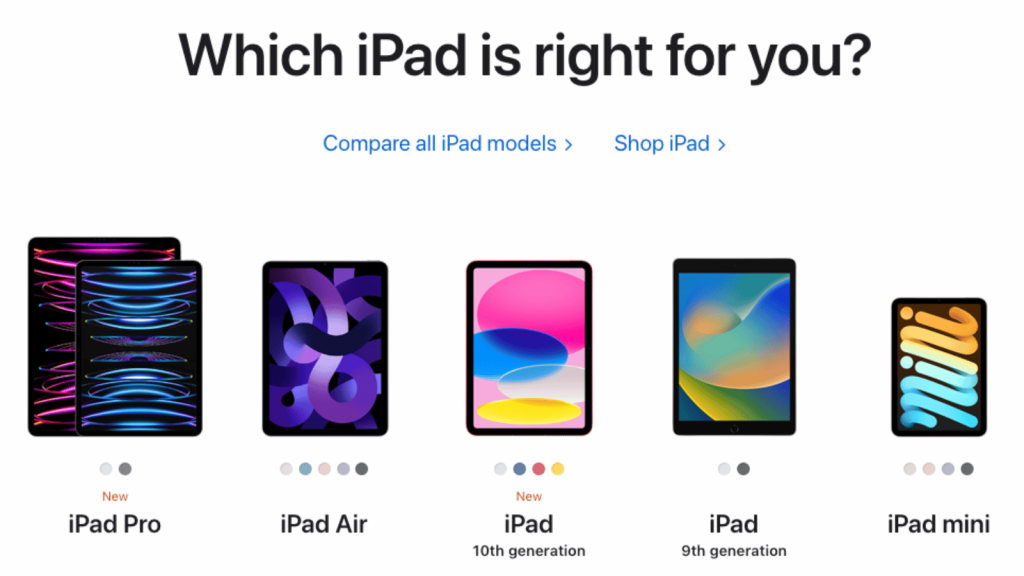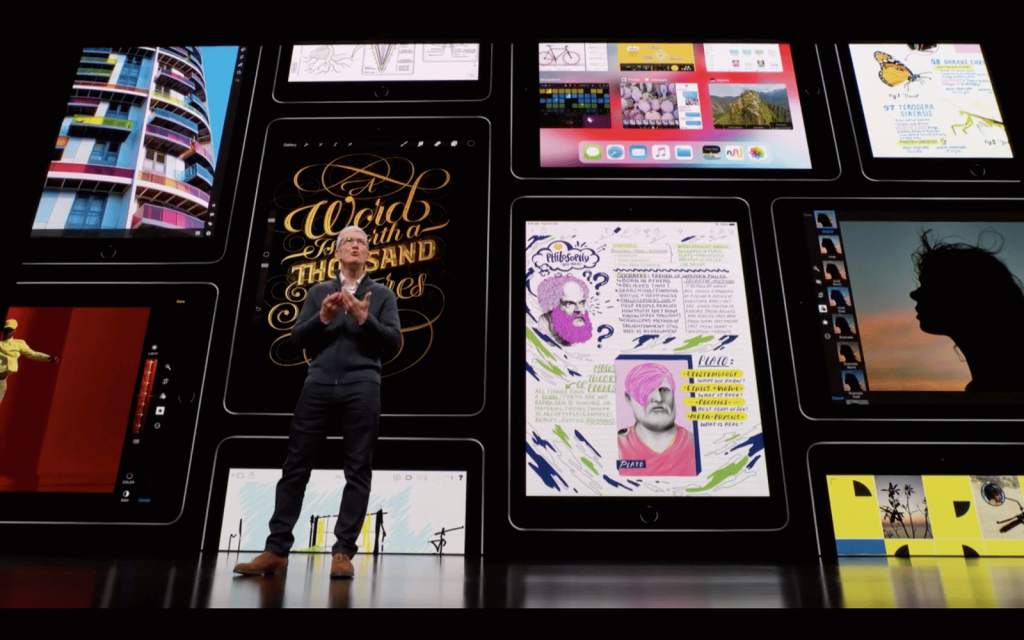The iPad Pro is getting a much-needed update – but only next year. This will coincide with the 10th anniversary of Apple’s market-dominating tablet, writes Bloomberg’s Mark Gurman, one of the best commenters on the fruit company. As he points out the iPad Pro is getting its “first major overhaul in half a decade, and it can’t come soon enough”.
Not only is the whole tablet in the doldrums, but the iPad lineup is a confusing mess. I spent a few hours earlier this year trying to make sense of the convoluted options. I always buy Apple gear from Incredible, by the way, because it offers a three-year warranty.
There is the iPad Pro (12.9 and 11in), the iPad Air (10.9in), two options for the iPad (10.9-in 10th generation and 10.2 9th-gen), and the iPad Mini (8.3in). Shew.
The whole fruit basket
 The Pro models have the latest M2 processor, the Air has the M1, and the Mini has the newer A15 Bionic, which is faster than the 10th-gen iPad’s A14 and the 9th-gen’s A13. Navigating these incomparable options (it’s more like comparing pears to naartjies, if you excuse the belaboured pun) is strangely very un-Apple – which has always prided itself on simplicity.
The Pro models have the latest M2 processor, the Air has the M1, and the Mini has the newer A15 Bionic, which is faster than the 10th-gen iPad’s A14 and the 9th-gen’s A13. Navigating these incomparable options (it’s more like comparing pears to naartjies, if you excuse the belaboured pun) is strangely very un-Apple – which has always prided itself on simplicity.
Gurman also notes that the lineup is “confusing”. He looks at the similarly sized 11in iPad Pro and 10.9in iPad Air. “Because the Pro has ProMotion, LiDAR, an M2 chip and a second camera, it costs $200 more. But those features probably aren’t compelling enough to sway most consumers. The 10th-generation iPad, meanwhile, should probably already have replaced the $329 iPad, a holdover that still has a home button.”
I’ve left his dollar prices because they are similar in Rands I found.
Additionally, there was not much more in last year’s M2 iPad Pro update than the previous M1 model update. A list of specs is available on request if you really want to know, but I landed on the M1 model because the price difference for the M2 wasn’t worth it.
As Gurman points out, “iPad updates have been especially minor as of late”.
I agree with him that “most compelling new model in years was the low-end, 10th-generation iPad” launched last October.
Meanwhile, Pro models haven’t “seen a breakthrough update since the current design launched in 2018, and the iPad mini hasn’t been refreshed in two years”.
Part of this is Apple’s own fault, as it were. “Apple also is competing with itself, thanks to improvements in the Mac lineup. Following the company’s move to in-house chips, Macs have become more durable and cost-effective. They last longer and are speedier, eliminating the need for iPads in some cases”.
I have been trying to see if an iPad Pro 11in could be a laptop replacement for (the much-less-frequent) overseas trips to conferences. For the most part, it’s a good alternative for schlepping around cavernous conference halls and taking notes during keynotes. It has better battery life than my MacBook Pro M1 13in and is about 300g lighter as Apple’s Magic Keyboard brings the weight up to nearly 1kg. It’s also smaller and more compact.
But it is still like using a big iPhone. In most apps, you can only have one document open at a time, and the alt-tabbing between them is not as slick as a laptop.
iPad’s way forward
Gurman’s right that the “approach to iPad software continues to be perplexing. Stage Manager, which is meant to make it easier to multitask, can still be difficult to use. And Apple has been reluctant to bring more Mac-like functionality to the platform”.
But, as much as the tablet market is sluggish, Apple is still doing okay.
“Apple is still in better shape than most of the competition. It remains far and away the market leader in tablets, with 37% of shipments last quarter,” he writes. “And even though its sales are declining, most rivals are falling even faster. Xiaomi was the only major manufacturer to grow last quarter, with a 42% shipment increase, according to IDC. But that brings it to a total of just 1-million units, compared with Apple’s nearly 11-million.”
While big changes aren’t expected this year, let’s see what Apple can reveal next year.




